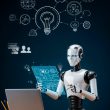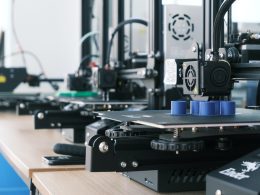Introduction
The education landscape has undergone a significant transformation with the advent of blended learning and hybrid classrooms. Blended learning refers to an instructional approach that combines traditional face-to-face teaching methods with online resources and technology. This method seeks to leverage the strengths of both in-person and digital learning environments. Hybrid classrooms, a subset of blended learning, emphasize a mix of in-person and virtual interactions, offering flexibility and innovation in education. This article delves into the benefits and challenges of implementing these models, shedding light on their impact on teaching, learning outcomes, and student engagement.
Benefits of Blended Learning and Hybrid Classrooms
Enhanced Flexibility: Blended learning and hybrid classrooms provide flexibility in learning by offering students the opportunity to access resources and materials at their convenience. This flexibility accommodates diverse learning styles, paces, and schedules, catering to individual student needs.
Personalized Learning Experience: Integrating online resources allows for personalized learning experiences. Adaptive learning software and online assessments can tailor content to individual student progress, providing targeted support and challenges based on their proficiency levels.
Access to a Wide Range of Resources: Online platforms offer a vast array of educational resources such as multimedia content, simulations, and interactive tools that complement traditional teaching methods. This diversified approach enriches the learning experience and caters to different learning preferences.
Improved Student Engagement: Incorporating technology and interactive elements into lessons often leads to increased student engagement. Gamification, collaborative online projects, and multimedia presentations capture students’ interest and motivation, fostering active participation and deeper learning.
Preparation for the Digital Age: Blended learning equips students with digital literacy skills essential for the modern workforce. It familiarizes them with various digital tools and platforms, preparing them for a technology-driven society.

Challenges of Blended Learning and Hybrid Classrooms
Technological Barriers and Access Disparities: Not all students have equal access to technology or a stable internet connection, leading to disparities in accessing online materials. Technological glitches and the learning curve associated with using new tools can also impede the learning process.
Teacher Training and Support: Educators may require extensive training and support to effectively integrate technology into their teaching methods. Lack of adequate training can hinder the seamless implementation of blended learning, affecting the quality of instruction.
Maintaining Engagement and Interaction: Balancing in-person and online interactions to maintain student engagement poses a challenge. Ensuring meaningful interactions and discussions in virtual settings while fostering a sense of community and collaboration can be demanding.
Overreliance on Technology: Excessive reliance on technology may diminish critical thinking and interpersonal skills. Finding the right balance between technology use and traditional teaching methods is crucial for holistic skill development.

Conclusion
Blended learning and hybrid classrooms offer numerous advantages, including flexibility, personalized learning, and improved engagement. However, challenges such as technological barriers, teacher training needs, and maintaining interaction require careful consideration and proactive solutions. Striking a balance between traditional teaching methods and technology integration is pivotal in harnessing the full potential of these innovative educational approaches. As education continues to evolve, a thoughtful and adaptable approach to blended learning can pave the way for a more effective and inclusive learning environment.












